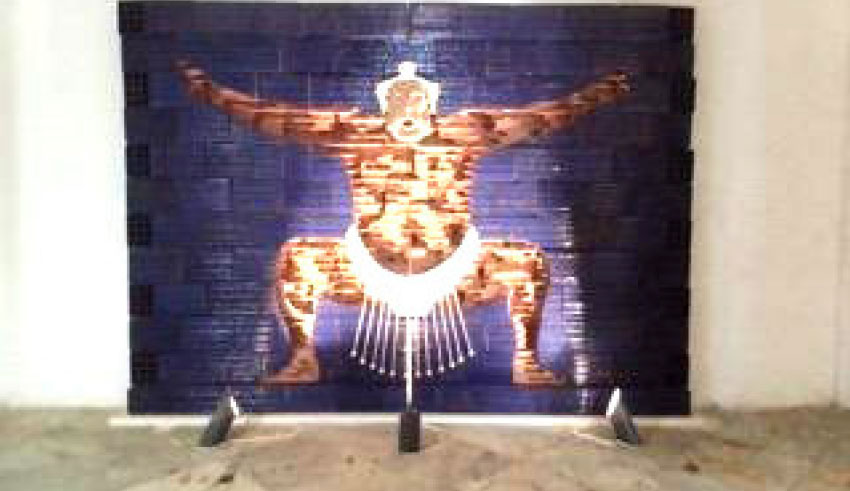It is out of the ordinary, off the beaten path, off the gallery, it takes place in his studio in an old palace at the end of a dark corridor by the sea. Time stops in his studio, a place he lives with works born in situ. Omar Bey questions himself, questions himself, poses a postulate, wish or regret: I would have liked to be an artist…Questioning on his status as an artist, the place occupied by art, his role, his identity, his form , his practice…
In this workshop almost bare of any conventional trace, of this timeless place, witness to a past, frozen time. The imprint of a splendor leaves a memory in pieces and he, in this dilapidation, he weaves.
The works are fixed like cobwebs, the lines are precise and clear, penetrated by the void, the colossus manipulates iron wires according to his imagination. The idea materializes in images around a central element, a character, an animal, an object…
A wire as malleable as a concept, an imagination, which is forged, twisted and stretched according to the good will of the artist whom a desire guides in the center of a circle. He imposes limits on himself to transgress them, erects a wall to break pieces of it, imposes on himself a medium, not always malleable, which he diverts.
His hand is almost omnipresent, that of the artist, but strongly marked by that of the craftsman. With his particular relationship to the material, he exhibits his hand in a sort of mise-en-abîme of a part of himself. She is there, to testify to her passage, to her action which could continue, resume at any time and with a handle and a pair of pliers could crumple everything to resume again. From a hand that creates, that works, that scratches itself and gives birth, comes out the “melting-pot” that frees the bodies to defy the law of attraction, they twirl according to free love, a libido exposed to view.
For “I would have liked to be an artist”, Omar Bey leads us by the hand, does not go there by four paths, the force of his subject lies in the simplicity of the speech, its very naivety and in the complexity of its composition . “Mass immobility” places birds in an iron frame. The wide meshes of this structure become niches for birds. Arranged in perfect balance and order with their eggs as a point of connection, they freeze in an immutable posture. Only one, at the top of the tower, spreads the wings to leave this mould. Without getting there…
In each work, Omar places an element of censorship, violence, or repression, which cohabits in a chaotic composition with an improbable bestiary: minotaur, wild animals, birds, barnyard animals, all trapped in the wire. , and contours in which they all struggle.
And in the brilliant blue enamelled brick wall, a colossus takes shape in precise cutouts. A sumo in an artist’s mask who faces the world alone: ”Artistic fighter”, a fighter who faces the world, shows off his strength and deploys his arms and legs to occupy the space dedicated to him or who comes just getting high.
In this diversity of approach and this multitude of medium, emerges a particular uniqueness. Wanting to address the world in the most lively way with poor materials that alone express a discourse and a positioning. Omar Bey speaks specifically to himself, questions his status, questions his practice and ponders meaning and purpose. And in this half-intellectual, half-physical and material quest, we find ourselves at the center of a beautiful creative agitation which makes us adhere to a clean and personal universe, as if it were our own. The strange is well hidden in the visible and the accessible, the horror is one layer among others that only reveals itself at the right distance from the work, both literally and figuratively.
We wish to say thanks to the writer of this post for this awesome material
“I would have liked to be an artist” by Omar Bey: Like a spider’s web | The Tunisian Press
You can find our social media profiles here and other pages related to them here.https://nimblespirit.com/related-pages/

